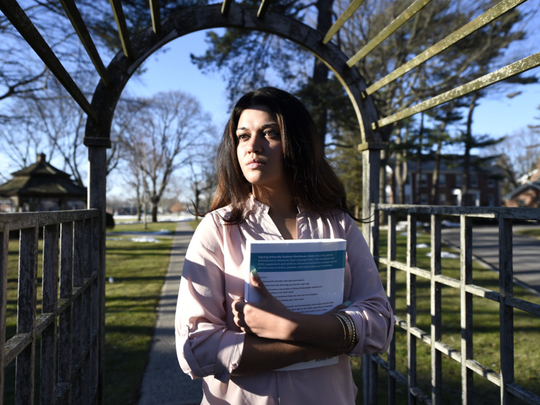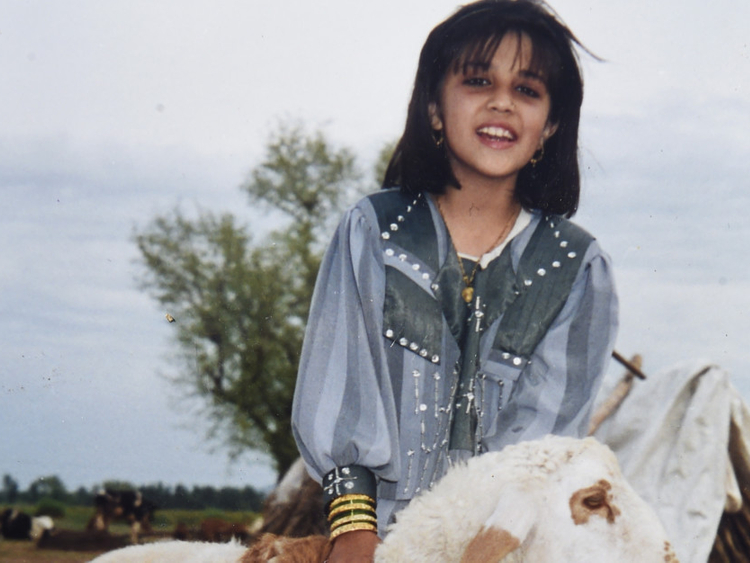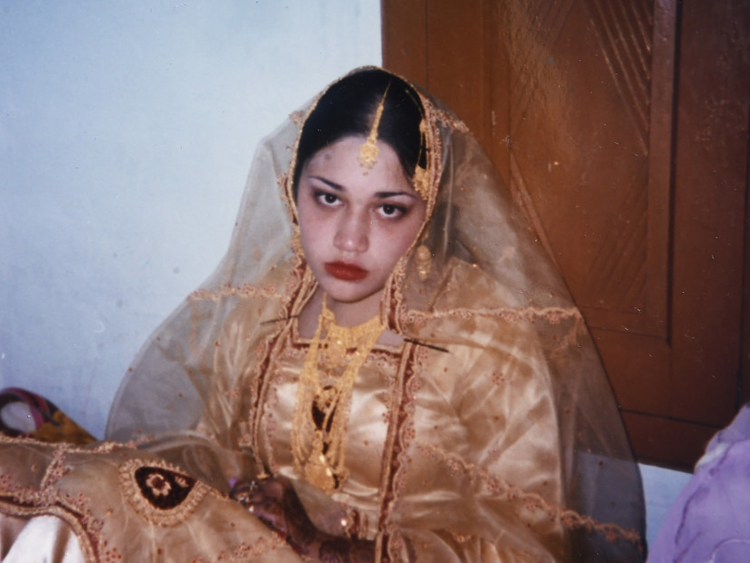
Child marriage wasn’t an issue of note for Virginia state Senator Jill Vogel until she heard the stories circulating in her district about a man in his early 50s marrying a girl in her mid-teens, warding off a police investigation of his relationship with her.
Now Vogel is lead sponsor of a bill advancing in Virginia’s legislature that would sharply curtail child marriage.
“Our marriage laws in Virginia are not protecting children,” she said.
A similar measure has been introduced in Maryland, and a pending bill in New York goes even further — it would make the state the first to ban marriage altogether for anyone under 18.
Worldwide, child marriage is a reality for millions of girls. Though the practice is most common in developing countries, critics who argue it exposes many girls to emotional and even physical harm say it poses a largely unseen threat in the US as well.
“We think we’re so sophisticated, so progressive and ahead of the times, and yet we still see this barbaric behaviour,” said Assemblywoman Amy Paulin, sponsor of the bill in New York.
Across the US, states laws generally set 18 as the minimum age for marriage, yet every state allows some exceptions. Most states let 16- and 17-year-olds marry if they have parental consent, and several states — including New York, Virginia and Maryland — allow children under 16 to marry if a court official gives approval.
There are no nationwide statistics on child marriage in the US, but data from a few states suggests it is far from rare.
Fraidy Reiss, who campaigns against coerced marriage as head of a nonprofit called Unchained at Last, researched data from her home state of New Jersey, and determined that 3,499 minors — 90 per cent of them girls — were married in the state between 1995 and 2012, including 178 who were under 15.
In New York State, according to Reiss, 3,853 minors were married between 2000 and 2010. Her figures are drawn from state health department data.
In Virginia, state health statistics show that more than 4,500 minors were married between 2000 and 2013, including about 220 who were 15 or younger.
Such data “should set off alarm bells, not wedding bells”, said Jeanne Smoot, senior counsel for policy with the Tahirih Justice Center in Falls Church, Virginia, which assists women at risk of domestic violence, trafficking and forced marriage.
Reiss — who says she was forced into an abusive marriage by her Orthodox Jewish family when she was 19 — contends that cases of child marriage via parental consent often involve coercion, with a girl forced to marry against her will. She says states generally do not require any investigation of this possibility, and girls are often not asked if they are marrying voluntarily.
Inspired by Reiss’ efforts, Paulin, the New York legislator, introduced a bill in January that would eliminate all exceptions in New York’s statutes and prohibit the marriage of anyone under 18. Paulin, a Democrat, believes her bill can get bipartisan support and become law.
“Just because we’re not talking about millions of girls here in the US doesn’t mean we shouldn’t protect the thousands of girls who are affected,” she said.
Reiss has been in touch with lawmakers in New Jersey, hoping for similar legislation there.
“Mostly the response is, ‘I can’t believe this is happening in my state. We have to stop it,’” Reiss said.
Meanwhile, the Tahirih Justice Center is working with legislators in Virginia to enact a law barring all under-18 marriages except for cases where 16- or 17-year-olds acquire the rights of an adult via an emancipation order freeing them from the control of their parents or guardians.
Vogel, the Virginia senator, said she chose to push for the legislation because of a case roiling the town of Middleburg in her North Virginia district.
According to Vogel, it had become common knowledge in the community that a man in his early 50s was having a relationship with a girl in her mid-teens. To ward off further scrutiny by authorities, the man obtained the consent of the girl’s mother and married the girl last year, Vogel said. She declined to identify those involved, for privacy reasons.
Under her bill, that type of marriage would no longer be an option — the girl would have to convince a judge that she should be legally emancipated and that the marriage was in her best interest.
The measure, which would end Virginia’s practice of allowing girls under 16 to get married if they are pregnant, cleared the Senate on Febrruary 9 by a 33-7 vote. One opponent, Senator John Edwards, argued that parents should retain the right to decide if their children under the age of 18 should get married.
The measure has now moved the Virginia’s House of Delegates. The lead sponsor in that chamber, Jennifer McClellan, said her grandmother got married at age 14 in rural Mississippi.
“People didn’t understand back then that children aren’t ready to have children,” McClellan said. “Now we understand all the negative consequences.”
She’s heard no objections to the bill from prominent immigrants hailing from countries where child marriage is a centuries-old tradition. Some families in those countries feel that marrying off their daughters will protect them from sexual assault; some poor families take the step to reduce child-raising expenses or to obtain a payment known as a “bride price”.
In the US, some immigrant families have retained those traditions of child marriage. In some cases, parents disapprove of someone their daughter is dating, and pressure her to marry someone they view as more suitable.
However, child marriage in America extends far beyond immigrant communities; it’s been a longstanding practice in certain cases where a girl becomes pregnant and there’s a desire that the child have married parents.
In Virginia, where girls under 16 can get married in cases of pregnancy, some of the age differences are striking. In 2010, a girl under 15 married a man in his 30s; another girl under 15 married a man in his 50s in 2006, state records say.
The health department records give no further details — they do not identify the court officials who approved the marriages or give any indication whether there was an investigation into the circumstances of the girl’s pregnancy.
“It’s haunting for us, looking at this data,” said Casey Carter Swegman, project manager of Tahirih’s Forced Marriage Initiative. “We want to reach out to those girls and at least find out if they’re OK, and who the judge was, and we’ve been told there’s no way to find out more.”
Occasionally, details of child marriages emerge in news accounts.
In 2005, there was widespread coverage of a Nebraska couple — Crystal and Matthew Koso — who married when she was 14 and he was 22. Because Crystal had become pregnant before the marriage, Matthew served 15 months in prison and had to register as a sex offender.
In 2011, 16-year-old Courtney Stodden, an aspiring singer and actress, married 51-year-old Doug Hutchinson, an actor known for his film role as a prison guard in The Green Mile. The couple’s subsequent ups and downs have been chronicled in celebrity-oriented media — Hutchinson told interviewers he had been denounced as a paedophile and targeted with death threats.
For the most part, though, child marriage in the US has escaped intensive scrutiny.
Tahirih’s goal is to get legislation passed in every state that would virtually eliminate child marriage.
Worldwide, according to Unicef, there are more than 700 million women who were married before 18. Numerous studies have concluded that the practice is detrimental to girls’ health, education and economic opportunities, and increases their vulnerability to abuse and violence.
Among those in the US working to curtail child marriage is a 26-year-old New Yorker Naila Amin, who had her own harrowing experience with the practice.
Amin says her parents, who brought her to the US as a 4-year-old, grew wary of her American-style social life when she entered her teens and the ensuing friction led to her being placed in foster care. When Amin ran away from foster care and returned to her family, they took to her to Pakistan as a 15-year-old and forced her to marry a 28-year-old cousin who beat and mistreated her.
“For the next few months, I cooked, cleaned and slept with my husband — my enemy,” Amin wrote in an account of her ordeal.
Thanks to the intervention of an uncle, and the fact that Amin was still technically a ward of the foster care system, she was able to get out of the marriage and return to the US. She’s now attending Nassau Community College on Long Island, with hopes of becoming a social worker and opening a group home for girls trying to avoid or recover from forced marriages.
“I was alone when I faced my marriage,” she says. “I want to be there for other girls.”










